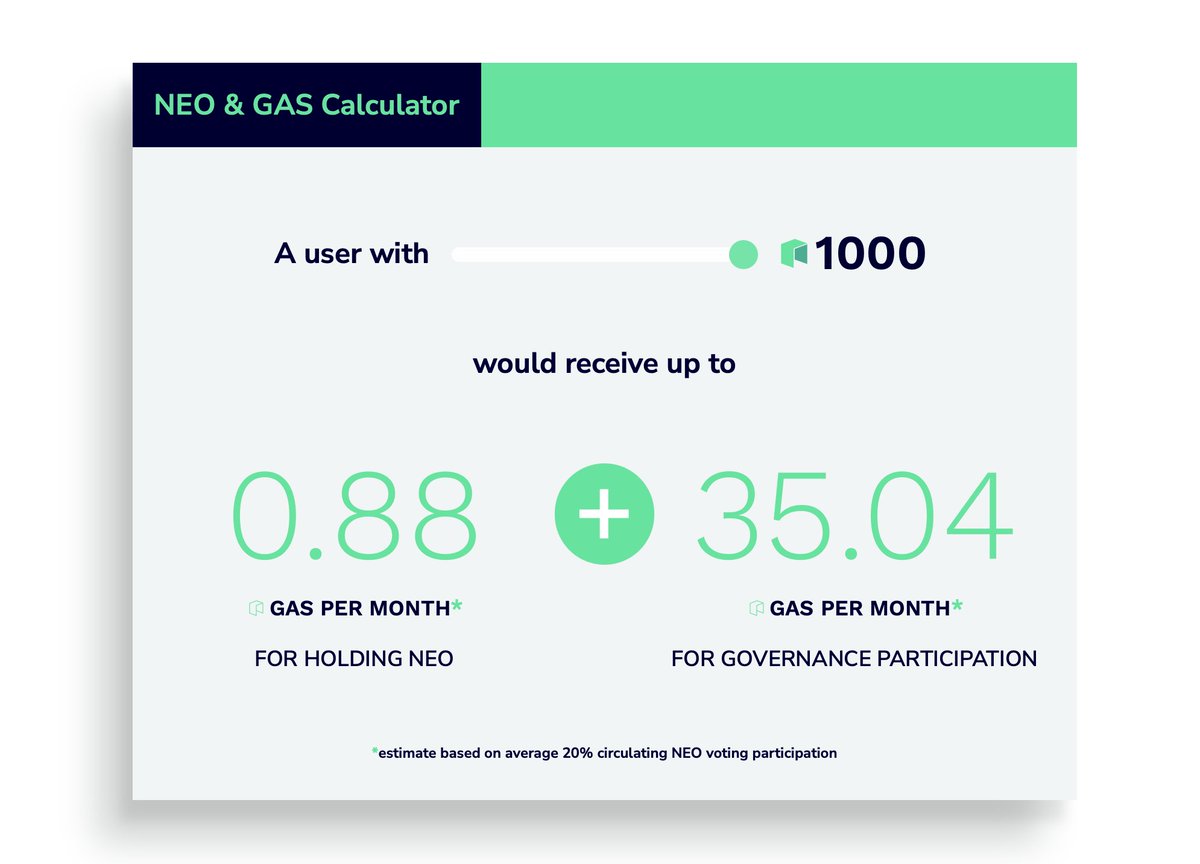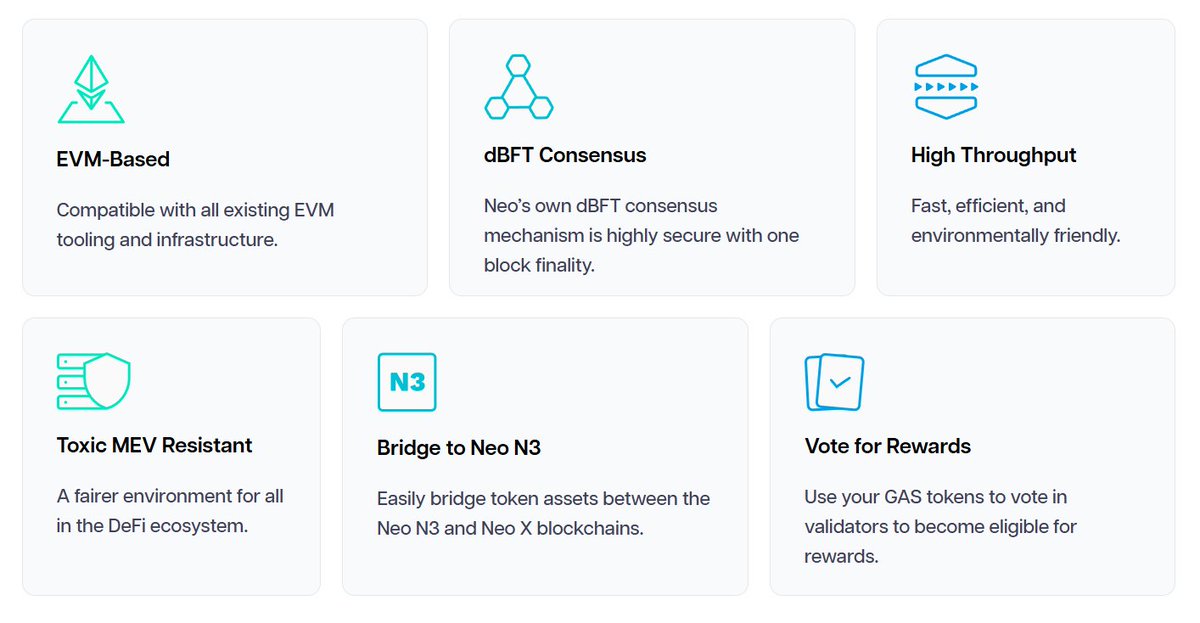
NEO
Ціна NEO
$6,4910
-$0,36300
(-5,30%)
Зміна ціни за останні 24 години

Який ваш сьогоднішній прогноз щодо NEO?
Поділіться тут своїми настроями, поставивши великий палець угору, якщо передбачаєте підйом монети (бичачу поведінку), або великий палець униз, якщо передбачаєте спад (ведмежу).
Голосуйте, щоб переглянути результати
Застереження
Соціальний вміст на цій сторінці (далі — «Вміст»), зокрема твіти й статистика від LunarCrush, надається третіми сторонами на умовах «як є» виключно з інформаційною метою. Компанія OKX не гарантує якість або точність Вмісту, який не відображає її погляди. Він не має розцінюватися як (i) інвестиційна порада чи рекомендація; (ii) пропозиція або заохочення купувати, продавати чи утримувати цифрові активи; (iii) фінансова, бухгалтерська, юридична чи податкова консультація. Цифрові активи, зокрема стейблкоїни й NFT, пов’язані з високим ступенем ризику, а їх вартість може сильно коливатися. Ціна й показники ефективності цифрових активів не гарантуються та можуть змінюватися без попередження.<br></br>OKX не надає рекомендацій щодо інвестицій або активів. Ви повинні ретельно зважити, чи підходить вам торгувати цифровими активами чи утримувати їх, з огляду на свій фінансовий стан. Щодо ваших конкретних обставин порадьтеся з юридичним, податковим чи інвестиційним фахівцем. Щоб дізнатися більше, перегляньте наші <a href="/help/terms-of-service">Умови використання</a> й <a href="/help/risk-compliance-disclosure">Попередження про ризики</a>. Використовуючи вебсайт третьої сторони (далі — «Сторонній вебсайт»), ви погоджуєтеся, що будь-яке використання Стороннього вебсайту регулюється умовами Стороннього вебсайту. Якщо це прямо не зазначено в письмовій формі, компанія OKX і її партнери (далі — OKX) жодним чином не пов’язані з власником або оператором Стороннього вебсайту. Ви погоджуєтеся, що OKX не несе відповідальності за жодні втрати, збитки й інші наслідки, що виникають у результаті вашого використання Стороннього вебсайту. Зверніть увагу, що використання Стороннього вебсайту може призвести до втрати або скорочення ваших активів. У деяких юрисдикціях продукт може бути недоступний.
Інформація про ринок NEO
Ринкова капіталізація
Ринкова капіталізація обчислюється множенням циркулюючої пропозиції монети на останню ціну.
Ринкова капіталізація = циркулююча пропозиція × остання ціна
Ринкова капіталізація = циркулююча пропозиція × остання ціна
Циркулююча пропозиція
Загальна кількість монет, яка є на ринку у відкритому доступі.
Рейтинг ринкової капіталізації
Рейтинг монети з точки зору показника ринкової капіталізації.
Макс. за весь час
Найвища ціна, якої досягла монета за всю історію торгівлі.
Мін. за весь час
Найнижча ціна, яку мала монета за всю історію торгівлі.
Ринкова капіталізація
$458,16M
Циркулююча пропозиція
70 530 000 NEO
70,53% з
100 000 000 NEO
Рейтинг ринкової капіталізації
--
Аудити

Останній аудит: 3 черв. 2021 р.
Макс. за 24 г
$6,8730
Мін. за 24 г
$6,3990
Макс. за весь час
$188,00
-96,55% (-$181,51)
Останнє оновлення: 16 січ. 2018 р.
Мін. за весь час
$3,9000
+66,43% (+$2,5910)
Останнє оновлення: 13 бер. 2020 р.
NEO — новини
Наведений нижче вміст отримано з .




andrew.moh
На тлі уламків криптопіку 2017 року небагато проектів все ще стоять.
Однією з них є @Neo_Blockchain – перевірена в боях «Dino Coin», яка не тільки вижила, але й еволюціонувала.
Завдяки переходу Neo X до EVM і моделі з двома токенами, яка все ще підвищує вартість,
Чи є Neo історією повернення крипторинку нового покоління? 🧵🔽

12,26 тис.
118

Flamingo Finance
🦩 Цього тижня ми підняли маркетинг на новий рівень, починаючи з укомплектування станції Flamingo на стенді Neo в @consensus2025, щоб ознайомити тисячі відвідувачів з Flamingo.
🏝️ Далі ми знову запускаємо платну рекламу на сотнях провідних криптосайтів.
$FLM $NEO #DeFi
Показати оригінал
23,83 тис.
52

Поділилися: Stacy Muur

Stacy Muur
Якщо ви криптографічний OG, ви знаєте @Neo_Blockchain. Але чи знаєте ви, що у них є потужна модель подвійних токенів: $GAS (утилітарний токен) і $NEO (токен управління)?
Якщо коротко:
Холдінг $NEO приносить вам $GAS, які потрібні для комісії за транзакції та виконання смарт-контрактів.
Просто утримуючи $NEO, ви можете заробити APR у розмірі ~4–5%. Для активної участі в управлінні річна відсоткова ставка може становити ~15–20%.
Це досить цікава модель для підживлення економіки токенів управління, imo.
Показати оригінал
38,63 тис.
123
Калькулятор NEO


Показники ціни NEO у USD
Поточна ціна NEO становить $6,4910. За останні 24 години для NEO спостерігалося зменшується на -5,30%. Наразі циркулююча пропозиція становить 70 530 000 NEO, а максимальна — 100 000 000 NEO, що дає повністю розбавлену ринкову капіталізацію в розмірі $458,16M. На сьогодні монета NEO займає 0 позицію в рейтингу ринкової капіталізації. Ціна NEO/USD оновлюється в режимі реального часу.
Сьогодні
-$0,36300
-5,30%
7 днів
-$0,26000
-3,86%
30 днів
+$1,1320
+21,12%
3 місяці
-$4,3910
-40,36%
Популярні конвертації NEO
Останнє оновлення: 17.05.2025, 18:59
| 1 NEO у USD | 6,4960 $ |
| 1 NEO у EUR | 5,8197 € |
| 1 NEO у PHP | 362,50 ₱ |
| 1 NEO у IDR | 107 141,7 Rp |
| 1 NEO у GBP | 4,8905 £ |
| 1 NEO у CAD | 9,0752 $ |
| 1 NEO у AED | 23,8598 AED |
| 1 NEO у VND | 168 377,4 ₫ |
Про NEO (NEO)
Рейтинг визначено на основі даних, зібраних OKX із наданих джерел, і має виключно інформаційний характер. OKX не гарантує якість або точність рейтингів. Вони не призначені для надання (i) інвестиційних порад або рекомендацій; (ii) пропозиції або заохочення купувати, продавати чи утримувати цифрові активи; або (iii) фінансових, бухгалтерських, юридичних або податкових консультацій. Вартість цифрових активів, включаючи стейблкоіни й NFT, пов’язана з високим ризиком і може сильно коливатися й навіть знецінюватися. На цифрові активи не поширюються жодні гарантії, і їх можуть змінити без попереднього сповіщення. Ваші цифрові активи не застраховані від можливих збитків. Прибутковість в минулому не гарантує аналогічних прибутків у майбутньому. OKX не гарантує повернення інвестованого капіталу чи відсотки з нього. OKX не надає рекомендацій щодо інвестицій або активів. Ви маєте самостійно вирішувати, чи варто торгувати цифровими активами або утримувати їх, зважаючи на свій фінансовий стан. Якщо у вас виникнуть запитання, проконсультуйтеся з юридичним/податковим/інвестиційним фахівцем.
Показати більше
- Офіційний вебсайт
- Github
- Оглядач блоків
Про сторонні вебсайти
Про сторонні вебсайти
Використовуючи вебсайт третьої сторони (далі — «Сторонній вебсайт»), ви погоджуєтеся, що будь-яке використання Стороннього вебсайту регулюється умовами Стороннього вебсайту. Якщо це прямо не зазначено в письмовій формі, OKX і партнери компанії (далі — «OKX») жодним чином не пов’язані з власником або оператором Стороннього вебсайту. Ви погоджуєтеся, що OKX не несе відповідальності за жодні втрати, збитки й інші наслідки, що виникають у результаті використання вами Стороннього вебсайту. Зверніть увагу, що використання Стороннього вебсайту може призвести до втрати або зменшення ваших активів.
NEO — FAQ
Скільки сьогодні коштує 1 NEO?
Наразі один NEO коштує $6,4910. Якщо вам цікава динаміка цін NEO — ви потрапили в потрібне місце. Слідкуйте за графіками NEO і торгуйте відповідально з OKX.
Що таке криптовалюта?
Криптовалюти, як-от NEO, є цифровими активами, які працюють на основі публічного реєстру, що називається блокчейн. Дізнайтеся більше про монети й токени на OKX і їх атрибути, зокрема ціни та графіки в режимі реального часу.
Коли була винайдена криптовалюта?
Через фінансову кризу 2008 року інтерес до децентралізованих фінансів різко зріс. Bitcoin став новим безпечним цифровим активом у децентралізованій мережі. З того часу було створено багато інших токенів, як-от NEO.
Чи зросте сьогодні ціна на NEO?
Перегляньте сторінка з прогнозами цін на NEO, щоб передбачати майбутні ціни й визначати цільову вартість.
Розкриття інформації про ESG
Принципи екологічного, соціального й корпоративного управління (Environmental, Social, and Governance, ESG) для криптовалютних активів покликані вирішити проблеми, пов’язані з їх впливом на довкілля (наприклад, енергозатратний майнінг), сприяти прозорості й забезпечувати етичні методи управління, щоб узгодити криптовалютну галузь із більш масштабними цілями сталого розвитку й суспільства. Ці принципи заохочують дотримуватися стандартів, що знижують ризики й зміцнюють довіру у сфері цифрових активів.
Відомості про актив
Назва
OKcoin Europe LTD
Ідентифікатор відповідної юридичної особи
54930069NLWEIGLHXU42
Назва криптовалютного активу
NEO
Механізм консенсусу
NEO is present on the following networks: ethereum, neo.
The Ethereum network uses a Proof-of-Stake Consensus Mechanism to validate new transactions on the blockchain. Core Components 1. Validators: Validators are responsible for proposing and validating new blocks. To become a validator, a user must deposit (stake) 32 ETH into a smart contract. This stake acts as collateral and can be slashed if the validator behaves dishonestly. 2. Beacon Chain: The Beacon Chain is the backbone of Ethereum 2.0. It coordinates the network of validators and manages the consensus protocol. It is responsible for creating new blocks, organizing validators into committees, and implementing the finality of blocks. Consensus Process 1. Block Proposal: Validators are chosen randomly to propose new blocks. This selection is based on a weighted random function (WRF), where the weight is determined by the amount of ETH staked. 2. Attestation: Validators not proposing a block participate in attestation. They attest to the validity of the proposed block by voting for it. Attestations are then aggregated to form a single proof of the block’s validity. 3. Committees: Validators are organized into committees to streamline the validation process. Each committee is responsible for validating blocks within a specific shard or the Beacon Chain itself. This ensures decentralization and security, as a smaller group of validators can quickly reach consensus. 4. Finality: Ethereum 2.0 uses a mechanism called Casper FFG (Friendly Finality Gadget) to achieve finality. Finality means that a block and its transactions are considered irreversible and confirmed. Validators vote on the finality of blocks, and once a supermajority is reached, the block is finalized. 5. Incentives and Penalties: Validators earn rewards for participating in the network, including proposing blocks and attesting to their validity. Conversely, validators can be penalized (slashed) for malicious behavior, such as double-signing or being offline for extended periods. This ensures honest participation and network security.
The NEO blockchain uses a Delegated Byzantine Fault Tolerance (dBFT) consensus mechanism to validate transactions, relying on an elected committee and consensus nodes to maintain security and efficiency. Core Components of dBFT: 1. Candidates: a. Individuals or organizations can register as candidates for committee membership, a process that requires on-chain registration. b. NEO holders vote for candidates based on their NEO holdings, with votes calculated every 21 blocks. c. Elections are valid if more than 20% of all NEO tokens participate in voting. The candidates with the most votes are selected as committee members and consensus nodes. 2. Committee: a. The top 21 candidates with the most votes are elected as committee members. This committee is responsible for governing the network, including electing node roles like Oracle nodes, StateRoot consensus nodes, NeoFS Inner Ring nodes, and consensus nodes. b. The seven members with the highest votes also serve as consensus nodes, responsible for proposing and generating new blocks. Consensus nodes are rotated every 21 blocks to maintain security and decentralization. c. Committee proposals require more than 50% agreement for approval, allowing the committee to update blockchain parameters as needed.
Механізми заохочення й відповідні комісії
NEO is present on the following networks: ethereum, neo.
Ethereum, particularly after transitioning to Ethereum 2.0 (Eth2), employs a Proof-of-Stake (PoS) consensus mechanism to secure its network. The incentives for validators and the fee structures play crucial roles in maintaining the security and efficiency of the blockchain. Incentive Mechanisms 1. Staking Rewards: Validator Rewards: Validators are essential to the PoS mechanism. They are responsible for proposing and validating new blocks. To participate, they must stake a minimum of 32 ETH. In return, they earn rewards for their contributions, which are paid out in ETH. These rewards are a combination of newly minted ETH and transaction fees from the blocks they validate. Reward Rate: The reward rate for validators is dynamic and depends on the total amount of ETH staked in the network. The more ETH staked, the lower the individual reward rate, and vice versa. This is designed to balance the network's security and the incentive to participate. 2. Transaction Fees: Base Fee: After the implementation of Ethereum Improvement Proposal (EIP) 1559, the transaction fee model changed to include a base fee that is burned (i.e., removed from circulation). This base fee adjusts dynamically based on network demand, aiming to stabilize transaction fees and reduce volatility. Priority Fee (Tip): Users can also include a priority fee (tip) to incentivize validators to include their transactions more quickly. This fee goes directly to the validators, providing them with an additional incentive to process transactions efficiently. 3. Penalties for Malicious Behavior: Slashing: Validators face penalties (slashing) if they engage in malicious behavior, such as double-signing or validating incorrect information. Slashing results in the loss of a portion of their staked ETH, discouraging bad actors and ensuring that validators act in the network's best interest. Inactivity Penalties: Validators also face penalties for prolonged inactivity. This ensures that validators remain active and engaged in maintaining the network's security and operation. Fees Applicable on the Ethereum Blockchain 1. Gas Fees: Calculation: Gas fees are calculated based on the computational complexity of transactions and smart contract executions. Each operation on the Ethereum Virtual Machine (EVM) has an associated gas cost. Dynamic Adjustment: The base fee introduced by EIP-1559 dynamically adjusts according to network congestion. When demand for block space is high, the base fee increases, and when demand is low, it decreases. 2. Smart Contract Fees: Deployment and Interaction: Deploying a smart contract on Ethereum involves paying gas fees proportional to the contract's complexity and size. Interacting with deployed smart contracts (e.g., executing functions, transferring tokens) also incurs gas fees. Optimizations: Developers are incentivized to optimize their smart contracts to minimize gas usage, making transactions more cost-effective for users. 3. Asset Transfer Fees: Token Transfers: Transferring ERC-20 or other token standards involves gas fees. These fees vary based on the token's contract implementation and the current network demand.
The NEO network uses a dual-token model featuring NEO and GAS tokens. NEO serves governance and voting functions, while GAS is used for network operations. Incentive Mechanisms: - NEO Token: Supply and Governance: NEO has a maximum supply of 100 million tokens, is indivisible, and is used for governance activities, including electing consensus nodes and adjusting consensus parameters. Claiming GAS: NEO holders earn GAS based on their holdings, which allows them to participate in the ecosystem without directly purchasing GAS. - GAS Token: Utility and Fees: GAS is the network’s utility token, with a minimum unit of 0.00000001 (1 Datoshi). GAS is required for network fees, including transfers, asset registration, and smart contract execution. GAS transactions are precise, supporting high granularity for fees. Supply: Unlike NEO, GAS has no maximum supply, and transaction fees paid in GAS are burned, which contributes to supply control. - GAS Distribution: Block Rewards: Each block generates 5 GAS, distributed to NEO holders, voters, and the Neo Committee: NEO Holders receive 10%, distributed based on the holding period. Committee & Consensus Nodes receive 10%, with rewards recalculated every 21 blocks based on updated voting. Voters receive 80%, incentivizing voting participation. Rewards are calculated and distributed every epoch (21 blocks), with voters for consensus nodes receiving a higher reward ratio than those voting for non-consensus committee members.
Початок періоду, якого стосується розкриття інформації
2024-04-20
Кінець періоду, якого стосується розкриття інформації
2025-04-20
Звіт про споживання енергії
Споживання енергії
65700.00000 (kWh/a)
Джерела й методики споживання енергії
The energy consumption of this asset is aggregated across multiple components:
To determine the energy consumption of a token, the energy consumption of the network(s) ethereum, neo is calculated first. Based on the crypto asset's gas consumption per network, the share of the total consumption of the respective network that is assigned to this asset is defined. When calculating the energy consumption, we used - if available - the Functionally Fungible Group Digital Token Identifier (FFG DTI) to determine all implementations of the asset of question in scope and we update the mappings regulary, based on data of the Digital Token Identifier Foundation.
Калькулятор NEO




















Соцмережі